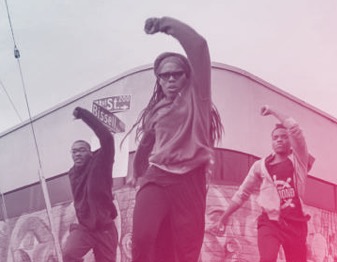As a card-carrying sci fi nerd, I know I’m biased. But I think the third season of Star Trek: Picard was a much better example of a revival hitting on all cylinders. The season, which dropped earlier this year, reunited most major characters from Star Trek: The Next Generation in a new adventure which allowed old characters to show fresh sides in a show with amped-up, modern special effects.
Maternal ship’s doctor Beverly Crusher came back as a butt-kicking, altruistic action hero with a secret past she’d hidden from her former flame, a wizened Admiral Jean-Luc Picard. Stalwart second-in-command Will Riker was a captain struggling to reconnect with his own family. Formerly blind engineer Geordi La Forge, now outfitted with awesome artificial eyes, was a parent himself. The new threat facing the galaxy was bound up in their shared history, but also revealed new depths to the characters that fans loved.
Nearly 30 years after the original series stopped making new episodes, the Picard revival was so successful it sparked an online petition by fans to continue the story in a new series based on a beloved video game, Star Trek: Legacy.
In Trek‘s case, that central question — why now? — had a powerful answer.
When a TV reimagining really works
The original 1988 version of The Wonder Years always stuck in my craw a bit. It was set at a time that was pivotal for race relations and Black people — two decades earlier, in 1968 — but featured no Black characters.
So ABC’s rejiggering of the show, centered this time on an all-Black family, felt a little bit like an apology. It’s also why this version — a heartwarming, gently funny tale featuring Don Cheadle as the grown-up voice of 12-year-old protagonist Dean Williams — works so nicely. Not only do we meet an authentic, entertaining family who couldn’t be more different than Fred Savage’s Kevin Arnold and his relations in suburbia, we see the show’s unique flashback formula used to tell new stories about a Black kid coming of age during times which affected black families very differently.
Instead of recreating the show as the Arnolds in blackface, ABC reimagined The Wonder Years as a new tale set at the same time, focused on a different family. And because period pieces are always about the times when they are made rather than the times they depict, all the issues they present are handled far differently than they would have been in the late 1980s.
When a TV reboot (kind of ) works
For the purposes of this story, I’ve defined a TV reboot in slightly stricter terms than usual — as a new version of an old program featuring the same characters in the same setting. Think of the History channel’s remake of the classic 1970s-era miniseries Roots in 2016. Or Netflix’s series version of Spike Lee’s first major film, She’s Gotta Have It, in 2017. Stretch it a bit, and you might even include other Netflix standouts like Lost in Space and Wednesday (which is really just a reboot of The Addams Family).


9(MDAxOTAwOTE4MDEyMTkxMDAzNjczZDljZA004))

